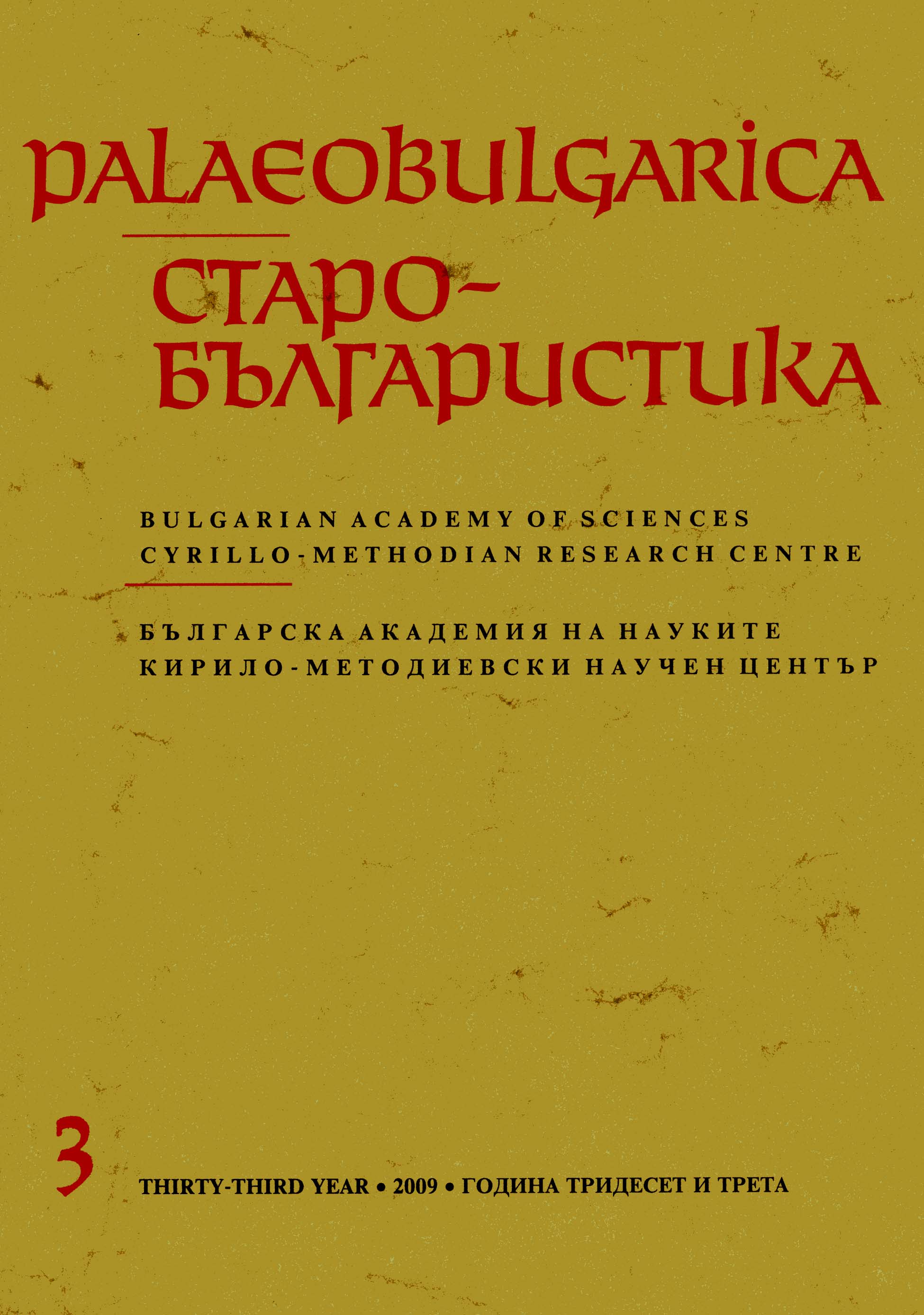Химнографската книга Трополог: извори и идентификации
The Hymnographic Book of the Tropologion: Sources and Identifications
Author(s): Svetlana KujumdzievaSubject(s): Language and Literature Studies, Music
Published by: Кирило-Методиевски научен център при Българска академия на науките
Summary/Abstract: The Tropologion is considered to be the earliest known extant chant book from the early Christian world that was in use until about the 12th century. The study of this book is still in its infancy. It is generally believed that the Tropologion has survived in Georgian translation only where it is called "Iadgari". Similar books, however, exist in several other languages: Greek, Syriac, and Armenian. All their copies clearly show that the spread and the use of the book was much greater than was previously assumed and that the Georgian Iadgari is only one of its versions. 16 manuscripts in Greek (including the Sinai copies found in 1975) with the designation "Tropologion" are analysed in the article. The designation is found either in the initial rubrics of the manuscripts or in their inscriptions. The manuscripts are from the 8th/9th to the 12th century and represent different types: 9 are of the Menaion type, 1 of the Triodion type, 3 of the Oktoechos type, and 3 remain unidentified. Three issues pointed out by the American scholar Peter Jeffery are very important for the elucidation of the entire history of the Tropologion: the content of the repertory, its arrangement, and the liturgical calendar according to which the offices were organized. The study of these issues unquestionably confirms that in its early stage the compilation of the Tropologion was carried out in Jerusalem or in its vicinity. Furthermore it outlines its uninterrupted development from Jerusalem to the Studios monastery and beyond, and it places the Tropologion among the most important primary sources that help us to situate the early context of the liturgy in the East and the items performed in it. The article analyses which of the three issues was transmitted from the Georgian Iadgari into the Greek Tropologion. The study of the content of the book shows that the repertory of troparia, stichera, kanons, hypakoi, and prokeimena was preserved. However, this repertory has increased dramatically: many new texts entered the Tropologion. Also, a new cycle of exaposteilaria sung after the ninth ode of the kanon was added. Along with the names of the old poetcomposers belonging to the circle of John of Damascus, new names of 9th- and 10thcentury writers like Theophanes Graptos and Joseph the Hymnographer appear. The arrangement of the repertory in the Greek Tropologion shows innovations. The yearly cycle as a whole was preserved, but it was divided and rearranged into two separate cycles containing, respectively, fixed and movable feasts. The fixed cycle covers the feasts of all of the days of the liturgical year month by month. The earliest copies of such an arrangement are from the 9th century and transmit the offices for March and April and for May and June. The movable cycle covers the feasts from Palm Sunday to the Sunday of All Saints. The weekly cycle is enriched: along with the Resurrection cycle for eight Sundays and the cycle for the Common offices there is a new one composed of kanons for every day of the week, starting with Monday morning and ending with Saturday morning. There is a change in the liturgical calendar as well. The beginning of the church year is not Annunciation-Christmas as in Iadgari but September 1 instead. It seems that the process of providing new chants for each cycle was completed by about the 12th century. It is almost certain that it was the Studios school of poetcomposers that subdivided the content of the Tropologion and compiled separate collections of books, each one containing a major liturgical cycle. In the beginning all of the volumes kept the old title of "Tropologion". In the course of the 10th century, however, this title started changing according to the repertory included and the books were renamed, probably according to the liturgical repertory included. The repertory for the fixed feasts of the annual cycle, starting with September 1 and ending on August 31, was collected in a book called a Menaion; the repertory for the movable feasts, starting with the Sunday of the Publican and Pharisee and concluding with the Sunday of All Saints, was gathered in a book called a Triodion; the repertory for the Resurrection offices for Saturday evening and Sunday along with the Common offices was gathered in the Oktoechos; and finally, the weekday offices were collected in the "New Oktoechos" known also as the "Parakletike" or the "Book of Supplication". In the Greek sources from the 13th century on, the title "Tropologion" is not encountered any more: in all probability this title became unclear, incorrect, and as a whole, superfluous, and thus fell out of use. In the Old Bulgarian literature a book designated as Tropologion is not known. That does not mean that such a book (being widely disseminated in the orthodox world) was not familiar to or used by the Old Bulgarian men of letters, especially when the Glagolitic alphabet was in use. The lack of the book could mean, however, that the earliest Old Bulgarian books preserved in Cyrillic present a later stage in the development of the hymnographic liturgical books when the designation "Tropologion" had already become superfluous and had been replaced by the new designations of "Menaion", "Triodion", etc. The latter designations, being both modern and prestigious at that time, were in all probability accepted for the newly written liturgical books in Cyrillic in Bulgaria and from there on they were spread to the other Christianized Slavic Orthodox countries. These designations we find in all of the Old Slavic books in Cyrillic. The topic touched upon in the article calls for further discussion.
Journal: PALAEOBULGARICA / СТАРОБЪЛГАРИСТИКА
- Issue Year: 2009
- Issue No: 3
- Page Range: 41-68
- Page Count: 28
- Language: Bulgarian
- Content File-PDF

